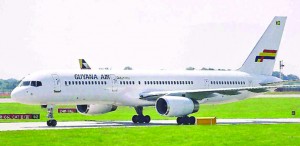In our issue two weeks ago (week ending May 5th), we gave a background to the privatisation drive that was initiated by the International Monetary Fund (IMF) back in 1989 under the then People’s National Congress (PNC) regime of President Desmond Hoyte. The rationale for privatisation was that the performance of the enterprises would be improved; employment increased; government would not have to subsidise them and in fact could collect taxes from income and profits; market forces would be strengthened in the economy; and a domestic capital market could be developed.

We used as examples, the cases of the telephone company, Guyana Telecommunications Corporation, and the National Paint Company to evaluate examples to what extent the goals of privatisation were realised. The former, while sold for a song, delivered on most of the goals and is still around as the Guyana Telephone and Telegraph (GT&T) company. The latter has disappeared ignominiously, leaving an unpaid balance of US$900,000 on its purchase price of US$1.15 million.
The PNC had rushed into the privatisation with gusto, placing 20 companies on the block and tried to complete as many as they could before the elections of October 5, 1992, which could be termed ‘Phase I’. After the People’s Progressive Party/Civic (PPP/C) took over the reins of government, they went into a more considered round of privatisation, which could be termed ‘Phase II’. From this round, we will consider the case of Guyana Airways Corporation (GAC) and from the PNC’s Phase I, the case of Demerara Woods Limited (DWL).
Demerara Woods
Like the privatisation of the giant Guyana Telecommunications Corporation, which was sold to a new U.S. company Atlantic Tele Network (ATN), Demerara Woods’ divestment was also executed outside of the purview of the Public Corporation Secretariat and the Divestment Unit that were responsible for privatisation matters. It had long been rumoured that more money passed under the table than over. It is not surprising, therefore, that historian Odeen Ishmael, lumped the Demerara Woods’ privatisation among the PNC’s “controversial deals”.
He wrote: “There were indeed some controversial privatisation deals which took place. The one that received the most publicity was the sale of Demerara Woods Limited. Lord Maxwell Beaverbrook, a former treasurer of British Conservative Party, bought the entity in February 1991 for £9.7 million. He also negotiated and obtained a 50-year lease for 1.1 million acres of rainforest.
“Just two months later, in April 1991, he sold his interests to United Dutch Company for £61 million worth of equity in that firm. The new entity was re-named Demerara Timbers Limited (DTL). Even though Beaverbrook had up to mid-1992 not finished paying the Guyana government for Demerara Woods, he merged the enterprise into the giant United Dutch Company. This latter company took control of Demerara Timbers, of which Beaverbrook remained a major shareholder. By 1992, United Dutch valued Demerara Timbers at £74 million!
“The rainforest concession alone was estimated at between US$160 million to US$206 million. The IMF cited Demerara Woods as a priority item for the state to sell despite the fact the bilateral donors and the World Bank had poured a huge amount of financial aid (including £14 million from the European community) for the development of Demerara Woods. Furthermore, Demerara Woods’ debt was underwritten by the government as part of the sale agreement. Thus, the citizens of Guyana subsidised the bargain-basement sale of a timber asset to entice foreign investment into the country.”
Guyana Airways
While Guyana Airways Corporation (GAC) was always on the IMF’s list of companies to be privatised, the PNC did not find any buyers. The PPP/C government held on to it until it collapsed in February 1999 due to problems primarily with its single aircraft – a Boeing 757-200 it had leased and to a top-heavy bureaucratic structure. The government worked feverishly to put the corporation back on its feet while placing it on the bloc. When it was privatised in 1999, the group that bought the 51 per cent controlling fraction of the shares in the new corporation renamed it ‘Guyana Air 2000’ (GA 2000), and had to assume only US$2.2 million of US$10 million of GAC’s liabilities.
The lucky purchaser was Aviation Investments, a consortium led by the Aircraft Owners Association of Guyana. The businessmen invested US$1.8 million in the operation while government’s 49 per cent stake was underpinned by US$1.7 million of GAC’s assets. The airline was renamed ‘Guyana 2000’.
The Aviation Investments group was comprised of a consortium of nine companies representing the crème de la crème of the Guyanese business community, including the aforementioned small aircraft operators. It was headed by Demerara Distillers Limited (DDL) Chairman Yesu Persaud and its board of directors suggest the spread of local corporate might and savvy: Vic Oditt, vice chairman; Carole Hebert, secretary; and directors messrs Anthony Mekdeci, Michael Correia (Jnr), Stanley Ming, Maurice Solomon and Feroze Mohamed.




